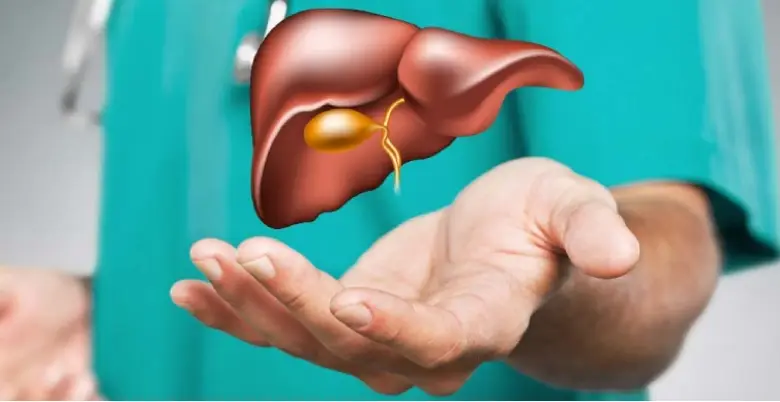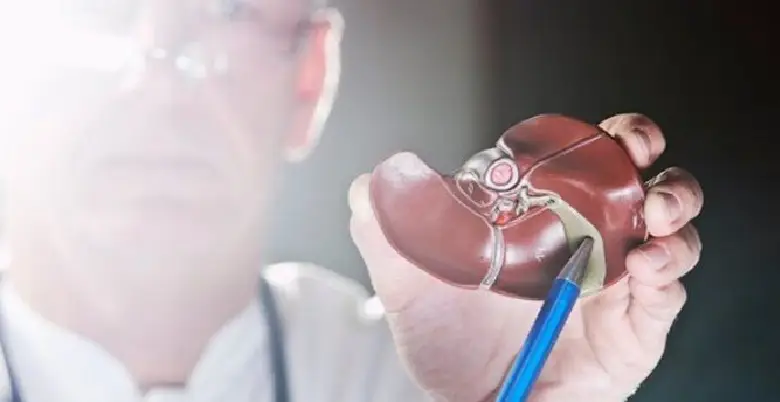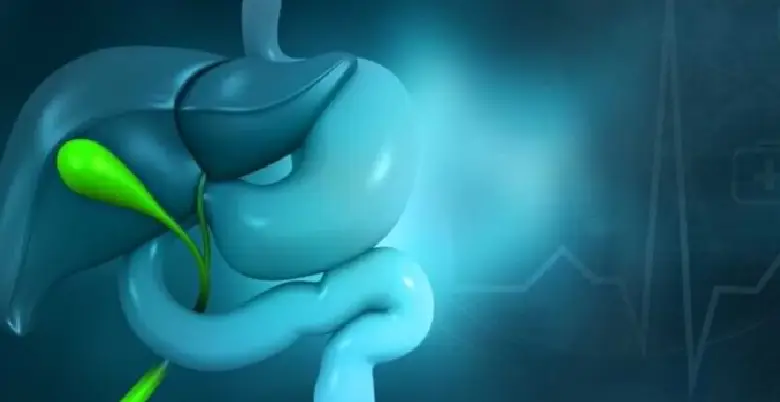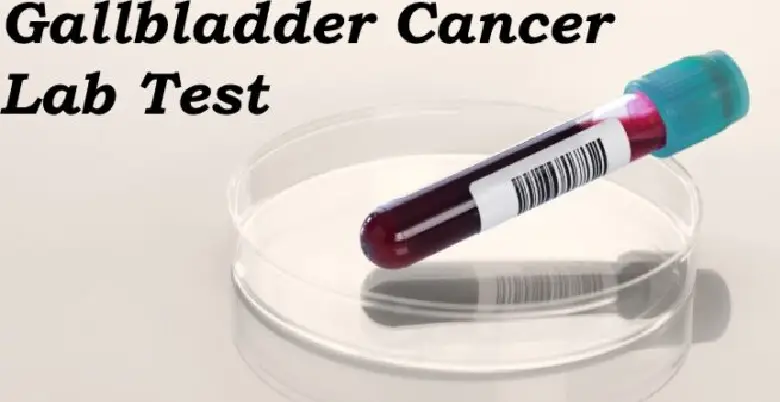Gall bladder is one of our organs, which is pear-shaped placed beneath the liver at the right side of the abdomen and is important for the digestion of food we ingest.
The gallbladder stores an enzyme known as bile which is secreted by live, and works for digestion of fat present in our ingested food.The gallbladder is located deep within your body under our liver which makes it difficult to detect growing cancer cells.
Read also about : Erectile Dysfunction Treatment
Gallbladder cancer is an abnormal growth of cells that begins in the gallbladder. This cancer is very uncommon and hardly occurs in 1% of the population. It can be treated very well if detected in early stages.
Because of its hard detection, they are diagnosed at later stages, when prognosis is poor. It’s very hard to discover this kind of cancer because there are no signs and symptoms present.
Read about – Acromegaly Treatment
The risk of gallbladder becomes high if one has or is suffering from gallstone or gallbladder inflammation. Gallbladder cancer occurs when malignant (cancer) cells grow in our gallbladder.
Your gallbladder is a pear-shaped organ in the upper right of your abdomen, just under your liver. It is a rare kind of cancer but represents half of the biliary tract cancer which further becomes the cause of fatal malignancies.

This cancer starts in the innermost layer of the gallbladder known as mucosal layer, affecting glandular cells and spreads outward. This type of cancer is known as adenocarcinoma.
As mentioned, there are no signs or symptoms in the early stages, so we can say, the physician detects it by chance either after gall bladder surgery or some scanning tests or at the later stage when patient complaints of symptoms.
Have you looked at : Thrombocytopenia Treatment
- Point to remember: Gallbladder cancer occurs when healthy cells become malignant cells and grow and multiply out of control. The term malignant defines that it’s serious and spreads to other nearby cells also. This can also occur due to changes, or mutations, in the genetic material. These genetic mutations occur over time and are not inherited from our biological parents.
Introduction Gallbladder Cancer Treatment
- High prevalence of gall stone
- Women or assigned females at birth.
- American Indian, Alaskan native or Mexican-American.
- Over age 65. (The average age at diagnosis is 72.)
- Gallstones or a history of gallstones.
- Gallbladder polyps.
- Chronic (long-term) gallbladder inflammation (cholecystitis).
- Chronic Salmonella typhi infection (the bacteria that causes typhoid).
- A build-up of calcium deposits in your gallbladder (porcelain gallbladder).
- Chronic inflammation in your bile ducts (primary sclerosing cholangitis).
- Cysts in your common bile duct (choledochal cysts).
- Obesity.
- Smoking and exposure to certain chemicals used to create textiles and rubbers can increase our risk.
Symptoms
- Upper abdominal pain specifically at upper right corner
- Yellowed skin and yellowed whites of your eyes (jaundice).
- Lumps in your abdomen.
You can also look at : Dialysis Treatment
- Unexplained weight loss.
- Nausea and vomiting.
- Bloating.
- Fever.

Diagnosis
Tests may include lab tests, imaging procedures and minor surgeries. These are explained below:
Lab tests
Lab tests detect certain enzymes or chemicals in your blood that may be signs of cancer.
- Liver capability test: It measures the levels of specific chemicals to check our liver function, which might show that gallbladder malignant growth is influencing your liver.
- Carcinoembryonic antigen (CEA) examine: It measures the degrees of CEA, which is a growth marker delivered by both normal and cancerous cells but the undeniable level indicates there is some kind of gallbladder disease.
- CA 19-9 measure: It determines the blood levels of the tumour marker CA 19-9. High levels are indicative of either pancreatic or gallbladder cancer.
Also read – Targeted Therapy
- Imaging tests: Imaging tests permit medical care suppliers to search for disease and indications of malignant growth spread.
- Stomach ultrasound: An imaging test that utilizations sound waves to make photos of the organs inside your midsection. You might require extra imaging techniques, similar to a CT sweep or X-ray, assuming an ultrasound identifies a mass that could be gallbladder malignant growth.
- CT (processed tomography) filter: a kind of X-ray that takes precise pictures of the organs inside the body and highlights the organs where this cancer has spread or even inside the gallbladder the level of cancer spread.
- MRI (Magnetic Resonance imaging): An imaging test that utilizes a magnet, radio waves and a PC to make photos within your body which determine the level of cancer spread and even detect the exact position.
- Endoscopic ultrasound: A ultrasound that utilizes a cylinder-like instrument called an endoscope to take photos of your intestinal system. It is passed through the mouth inside the body with a camera and light at the end.
- ERCP, also known as endoscopic retrograde cholangiopancreatography: A X-beam methodology that takes photos of your bile channels. These ducts can narrow when there is cancer of the gallbladder.
Treatment of Gallbladder Cancer
- Surgery: A medical care supplier called a careful oncologist might eliminate your gallbladder and close by tissue (cholecystectomy).
In the event that you have a basic cholecystectomy, the specialist will just eliminate your gallbladder. During an extended cholecystectomy, the surgeon will remove cancer-infected tissues from your liver and lymph nodes

- Radiation treatment: A machine outside your body (EBRT) is used in this treatment to target your cancer with radiation. While minimizing damage to healthy cells, the radiation either kills the cancer cells or slows the growth of the tumor.
You might require this therapy after a medical procedure to kill any excess malignant growth cells. Additionally, radiation can alleviate symptoms.
Have you looked at : Esophagus Cancer Treatment
- Chemotherapy: Drugs are used in chemotherapy to either kill cancer cells or prevent them from growing.
Like radiation, chemotherapy might assist with obliterating any leftover disease cells after medical procedure. Your supplier might suggest chemotherapy therapies close to radiation treatment.
Unresectable, repetitive or metastatic gallbladder disease treatment
Diseases that can’t be eliminated by means of a medical procedure, have returned (intermittent) or spread (metastatic) aren’t treatable.

Therapies like radiation treatment and chemotherapy will not take out the malignant growth, yet they can work on your side effects and broaden your life.
Likewise, while medical procedures can’t eliminate the disease, you might require systems to assuage side effects assuming cancers make blockages in your gastrointestinal system.
Read more : T-cell Lymphomas Treatment
- Designated treatment: Therapy that objectives disease cells that convey specific quality transformations.
- Immunotherapy: Therapy that reinforces your resistant framework so it’s better ready to distinguish and obliterate malignant growth cells.
- Radiosensitizers: Therapy that makes disease cells more delicate with the impacts of radiation treatment
Treatment Cost of Gallbladder Cancer
Depending upon the stage of cancer, the cost of the treatment is judged.

If the cancer has spread not far or is at the early stages, then it can be treated with an approximate range of Rs 40,000 to 50,000/- but on the other hand if the cancer has spread to other areas as then the cost ranges up to Rs 1,00,000/- (approx.).
The cost also varies on the reputation of the hospitals. The big hospitals with ample services cost more than this.